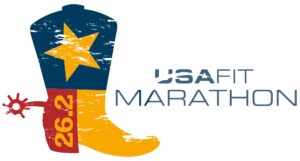Heart Rate and Pace

Pacing and Heart Rate
Finding a pace your can sustain for 26.2 (or Half – 13.1) miles can be quite challenging and elusive for many new runners and walkers. However, with the help of technology, runners and walkers can gain tremendous insight to their body’s natural ability to sustain a specific pace using your heart rate.
Many new runners/walkers start with a goal of running at a specific pace (eg. 9-minute mile pace) in hopes of achieving a certain marathon time. While a 9-minute mile may feel just great at mile 4, your body’s ability to sustain that pace at mile 14, and especially at mile 24, will diminish significantly if you have exhausted your body’s quick fuel (glycogen). This dreaded feeling is called “hitting the wall” or “bonking,” and typically happens to many new (and experienced) marathoners around mile 21.
That’s when running/walking by heart rate can help, targeting certain ranges based on a percentage of maximal heart rate. For long walks/runs, you want to be in “Optimal Aerobic Heart Rate Range” (OAHRR), which is where your body is burning the mostly fat instead of glycogen. (Interesting tidbit: Did you know it takes 2 pounds of fat to run a marathon?) Staying in your OAHRR during long training runs & walks trains your body to use slow burning fuel (fat) during the marathon, while keeping your quick fuel (glycogen) as a reserve if needed.
VO2 Max testing is the most accurate way to assess your maximal heart rate (Max HR), from which you can calculate OAHRR. The Aerobic Zone, where you want to be during our long walks and runs, is 70-80% of the Maximal Heart Rate (Max HR).
Max HR can also be ESTIMATED (though this can be inaccurate) by using the following formula: Max HR = 220 - age. But please be aware, this is just an ESTIMATE; true max HR varies greatly by individual.*
Example: a 40 years old’s Max HR = 180 beats per minute (bpm); the Aerobic Zone (70-80% of Max HR) is 126-144 bpm.
Here’s a quick way to estimate your Optimal Aerobic Heart Rate, using a calculated Maximal AEROBIC heart rate (top of the Aerobic Zone):
-
Estimated Max AEROBIC Heart Rate = 180 – Age + Factors
-
Factors:
-
Subtract 10 – if you are recovering from a major illness or on regular medication.
-
Subtract 5 – if you have not exercised before, or have injuries, or your training is regressing, or you are ill with colds, flu, allergies, etc.
-
Subtract 0 – if you have been exercising for up to two years without any real problems or bad health
-
Add 5 – if you have been exercising for more than two years without any problems while making progress with training.
-
Let’s try this method with the same 40 year old, who has been exercising up to two years without problems: 180 bpm - 40 + 0 = 140 bpm Max Aerobic HR. Similar result as before!
Once you know your OAHRR, a watch which measures your heart rate in beats per minute (BPM) using a chest strap (transmitter) is the most accurate way to get that reading. A second option is a watch which measures your pulse from around your wrist. While not as accurate as a chest strap, it does offer the convenience of omitting the chest strap completely.
When you make the jump to knowing your OAHRR, your body then tells you what pace you need to run at. Then it’s all about staying in your range, optimizing your body’s ability to burn more fat for fuel and keeping your quick fuel supply intact to avoid the dreaded “hitting the wall” experience.
If you have any questions about pacing and heart rate, I’ll be happy to talk about it with you any time.




